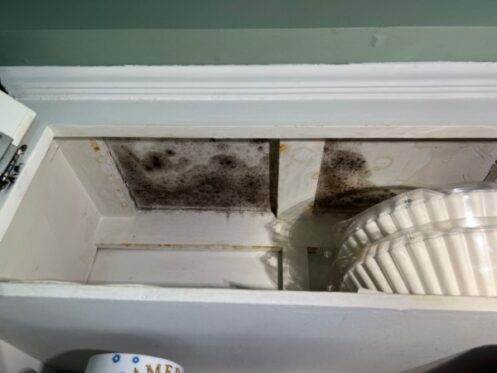Identifying the scent of mold can help you address potential infestations before they become significant problems. But what exactly does mold smell like? Have you ever walked into a room and noticed an odd, unpleasant odor you couldn’t quite place? That might be the odor of mold.
Understanding how mold smells can help you identify and address problems before they become serious. Recognizing this scent early on can prompt you to take action to prevent a minor issue from becoming a major problem.
The Distinct Smell of Mold
Mold produces a musty, earthy odor often compared to the smell of damp, decaying wood or wet leaves. This smell is caused by microbial volatile organic compounds (MVOCs) that mold releases into the air.
These compounds are produced by mold and other microorganisms during their metabolic processes. These compounds are released into the air as gases. They are responsible for the characteristic musty odor associated with mold growth. Odors can vary slightly depending on the type of mold and the materials it’s growing on, but a musty smell is generally the common denominator.
Common Descriptions of the Smell
- Musty: A damp, stale smell that reminds many people of basements, old books, or wet clothes left too long in the washing machine
- Earthy: Some people describe the smell as earthy, like the smell of soil or a forest floor. This makes sense, as mold thrives in damp, organic environments.
- Rotten: In some cases, the smell of mold can be like rotting wood or decaying organic matter, especially if the mold is growing on materials like wood or drywall.
- Pungent: Certain types of molds can produce a stronger, more pungent odor that is unpleasant and hard to ignore.
Why It Smells
The musty smell of mold comes from the chemicals it releases as it grows and spreads. Mold thrives in damp, humid environments, and its spores can attach to various surfaces, such as wood, drywall, carpeting, and insulation. As mold colonizes these surfaces, it breaks down the materials, which leads to the production of MVOCs. These compounds are what you smell when mold is present. The intensity of the smell can vary based on the amount of mold, the types of mold present, and the conditions in the environment.
Steps to Take if You Smell Mold
Even if you can’t see mold, the smell can signify hidden growth behind walls, under floors, or other concealed areas.
- Identify the Source: Try to locate the source of the smell. Check common mold-prone areas like basements, bathrooms, kitchens, and any place with water damage or high humidity.
- Improve Ventilation: Increase air circulation in the affected area by opening windows and using fans.
- Control Moisture: Mold needs moisture to grow, so address any leaks or dampness issues. Use dehumidifiers to maintain lower humidity levels.
- Seek Professional Help: Contact a professional mold remediation company like Pur360. Our experts can assess the situation, locate hidden mold, and provide effective removal and prevention strategies.
Recognizing the musty, earthy smell of mold is essential for keeping a healthy indoor environment. You can protect your property and well-being by staying alert and addressing mold issues quickly. If you ever notice an unusual, persistent odor in your home that you can’t identify, it could be mold. Don’t let mold catch you off guard—be proactive and investigate any suspicious scents right away to keep your home clean and mold-free.



